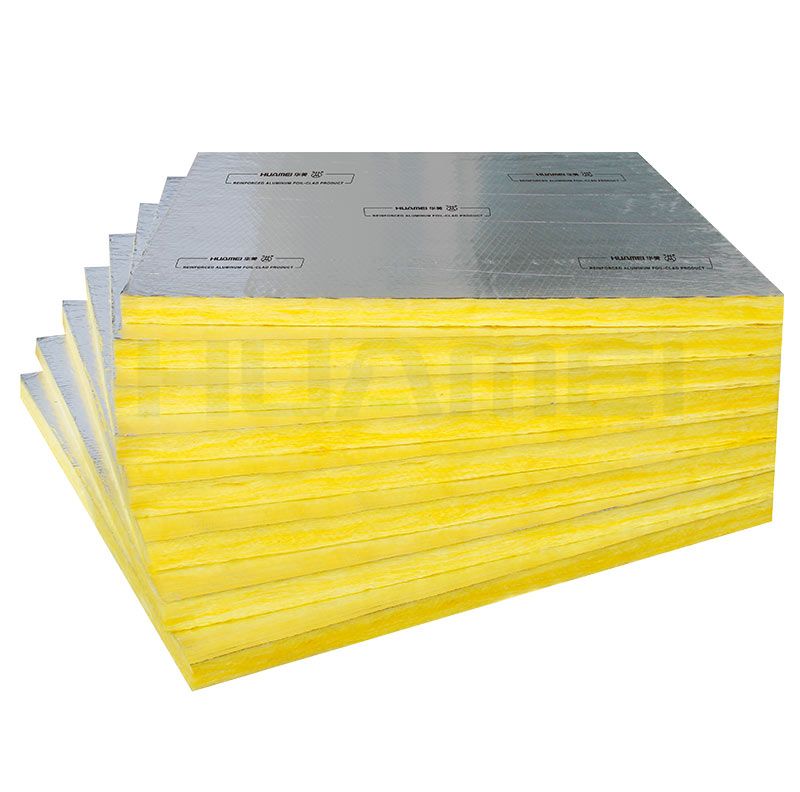Glass wool v reflective foil insulation
Contents |
[edit] Selecting insulation
Making the correct choice of insulation is never easy and straightforward, as many factors need to be considered. All available insulation products have their advantages and disadvantages, depending on the area in which they are installed, external factors, climatic zones, humidity levels, accessibility of the space to be insulated, etc.
The first thing to stress is that there is no "good" or "bad" insulation, as each product has its advantages and disadvantages compared to others, but a general comparative review can help understand different materials. This article will explain how to choose between glass wool and reflective foil insulation.
[edit] Glass wool Insulation
Glass fibre (or glass wool) is one of the world's most popular insulation materials and one of the most widely used products in the world. Its easy installation, as well as its versatility (as it can be installed in almost any space), are probably the reasons for this. It is made from fine glass fibres, which are bonded by an adhesive added during the manufacturing process, and is usually packaged in rolls or blankets so that it can be installed almost anywhere - it can be rolled between roof or floor joints, inside walls or on ceilings.
[edit] Reflective foil insulation
Reflective foil insulation, on the other hand, is becoming increasingly popular because of its ability to reduce radiant heat. The reason why reflective foil insulation can often be used in roofs and attic spaces is that it reflects radiant heat from the sun and is therefore an excellent insulating material. It usually comes in the form of sheets or rolls of foil (aluminium foil is the most popular type of foil) which can be easily wrapped around joints or pipes.
To understand the basic difference between these two insulation types, apart from their softness, you need to understand that heat is transferred in three basic ways, namely convection, conduction and radiation. Glass wool insulation is designed to reduce and stop convective and conductive heat transfer, while its counterpart is primarily used to stop radiant heat transfer.
Basically, radiant heat transfer can be stopped either by absorption (certain materials will absorb heat) or by reflection (by reflecting sunlight, for example, rather than letting them pass through).
As the name suggests, reflective foil insulation reflects radiant heat, which is important as 70% of heat loss and gain in a building envelope comes from radiant heat transfer. This makes this insulation very useful in both winter and summer. On the other hand, glass wool insulation is more effective in terms of convective and conductive heat transfer, which is why it is most commonly used to insulate internal walls.
[edit] Related articles on Designing Buildings
- Aerogel insulation for buildings.
- Acoustic insulation.
- Cavity wall insulation.
- External wall insulation.
- Floor insulation.
- Insulating concrete form.
- Insulation envelope.
- Insulation for ground floors.
- Phenolic foam insulation.
- Reducing thermal bridging at junctions when designing and installing solid wall insulation FB 61.
- Roof insulation.
- Solid wall insulation.
- Solid Wall Insulation: Unlocking demand and driving up standards.
- Specifying insulation for inverted roofs.
- Ten facts about Expanded Polystyrene (EPS) insulation to help specifiers.
- Thermal insulation for buildings.
- Transparent insulation.
- Types of insulation.
Featured articles and news
Latest Build UK Building Safety Regime explainer published
Key elements in one short, now updated document.
UKGBC launch the UK Climate Resilience Roadmap
First guidance of its kind on direct climate impacts for the built environment and how it can adapt.
CLC Health, Safety and Wellbeing Strategy 2025
Launched by the Minister for Industry to look at fatalities on site, improving mental health and other issues.
One of the most impressive Victorian architects. Book review.
Common Assessment Standard now with building safety
New CAS update now includes mandatory building safety questions.
RTPI leader to become new CIOB Chief Executive Officer
Dr Victoria Hills MRTPI, FICE to take over after Caroline Gumble’s departure.
Social and affordable housing, a long term plan for delivery
The “Delivering a Decade of Renewal for Social and Affordable Housing” strategy sets out future path.
A change to adoptive architecture
Effects of global weather warming on architectural detailing, material choice and human interaction.
The proposed publicly owned and backed subsidiary of Homes England, to facilitate new homes.
How big is the problem and what can we do to mitigate the effects?
Overheating guidance and tools for building designers
A number of cool guides to help with the heat.
The UK's Modern Industrial Strategy: A 10 year plan
Previous consultation criticism, current key elements and general support with some persisting reservations.
Building Safety Regulator reforms
New roles, new staff and a new fast track service pave the way for a single construction regulator.
Architectural Technologist CPDs and Communications
CIAT CPD… and how you can do it!
Cooling centres and cool spaces
Managing extreme heat in cities by directing the public to places for heat stress relief and water sources.
Winter gardens: A brief history and warm variations
Extending the season with glass in different forms and terms.
Restoring Great Yarmouth's Winter Gardens
Transforming one of the least sustainable constructions imaginable.























